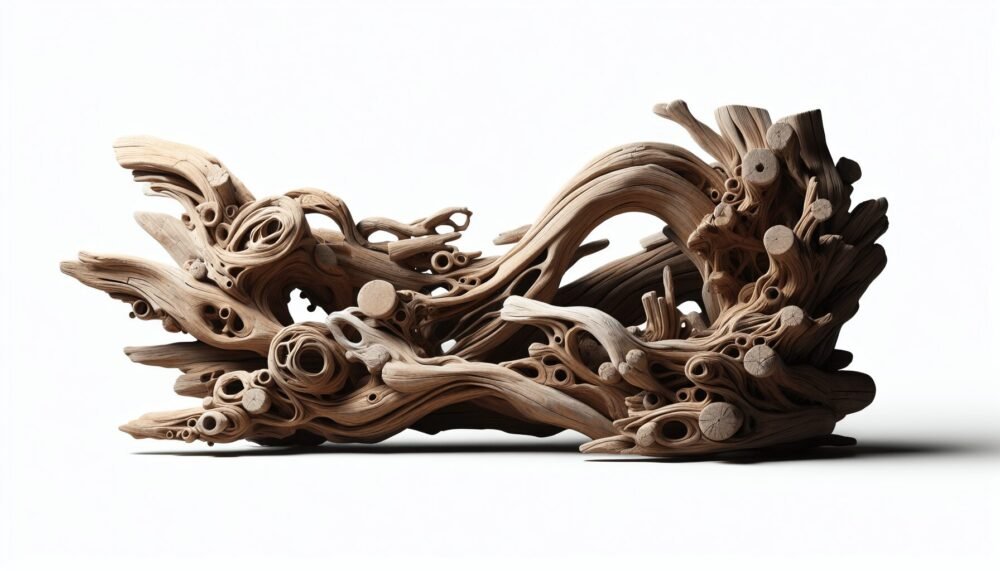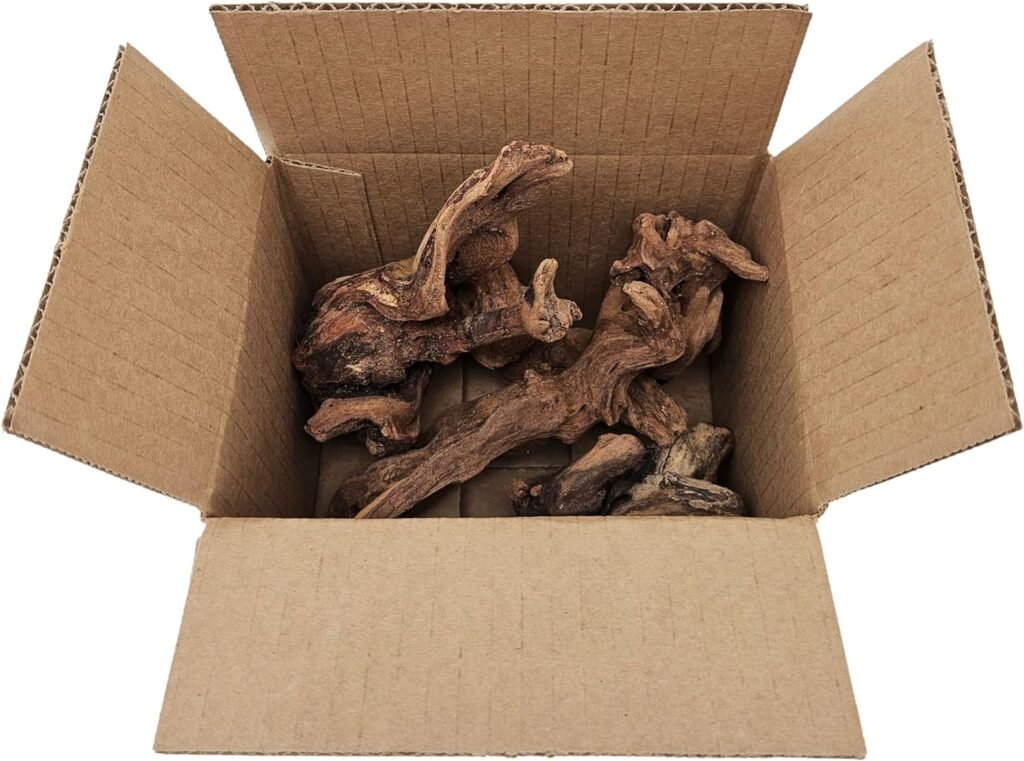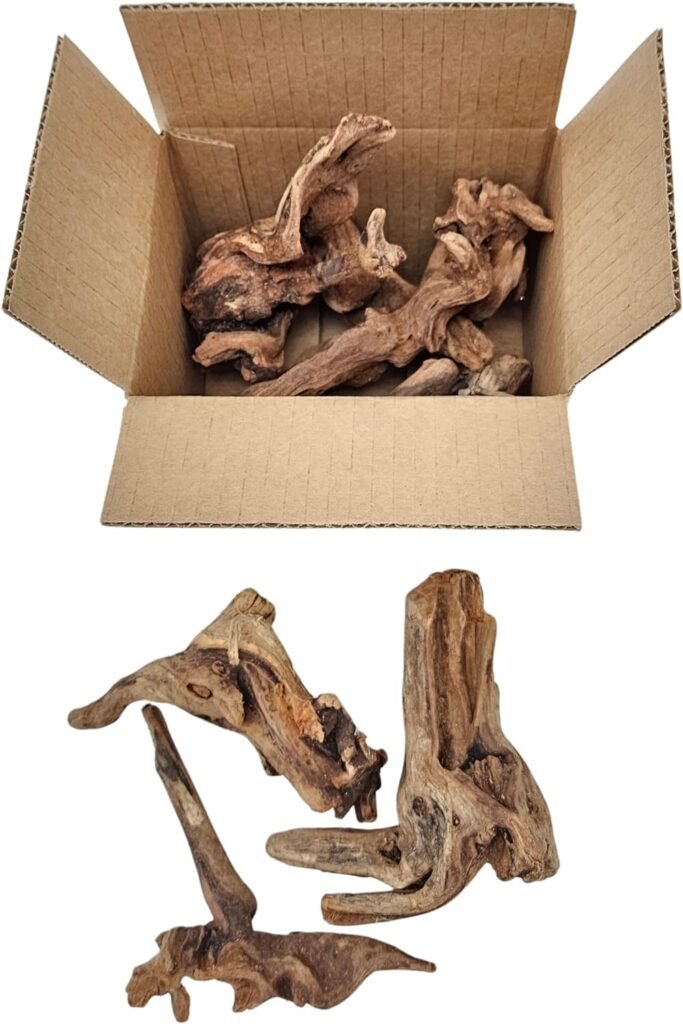Imagine walking along a serene beach, the waves gently lapping at your feet, when you stumble upon a captivating sight – intricate sculptures made entirely from driftwood. With each piece meticulously crafted, the weathered wood takes on new life, forming breathtaking works of art that display the beauty and resilience of nature. These driftwood art sculptures, created entirely from the remnants of sea-worn timber, offer a unique blend of creativity and natural elegance that transports you to a world where beauty can be found within every twist and turn of a weathered branch.
History of Driftwood Art
Origin of driftwood art
Driftwood art has a rich and fascinating history that dates back centuries. The origin of driftwood art can be traced back to ancient civilizations, where artists would stumble upon driftwood along the shores and see the potential in transforming it into beautiful sculptures. The concept of driftwood art began with the simple idea of utilizing nature’s discarded treasures to create something new and captivating.
Evolution of driftwood art
As time passed, driftwood art evolved and took on different forms. In the early days, driftwood was predominantly used to create practical items such as tools or shelter. However, artists soon began to explore the artistic possibilities of this versatile material. From simple carvings to more intricate sculptures, driftwood art grew in popularity as people recognized the unique beauty it possessed.
Famous artists and their contributions
Throughout history, there have been numerous talented artists who have made significant contributions to the world of driftwood art. One of the most renowned artists in this field is Heather Jansch, known for her incredible driftwood horse sculptures. Jansch’s work showcases the natural beauty of driftwood, capturing the spirit and grace of these majestic animals.
Another prominent artist is Jeffro Uitto, who creates stunning driftwood sculptures inspired by nature and mythical creatures. Uitto’s ability to blend different pieces of driftwood seamlessly is truly remarkable, resulting in breathtaking and awe-inspiring artwork.
These artists, along with many others, have played a crucial role in popularizing driftwood art and pushing the boundaries of what can be achieved with this unique medium.
Characteristics of Driftwood
Natural weathering process
One of the defining characteristics of driftwood is its weathered appearance. Driftwood undergoes a natural aging process as it is exposed to the elements, including wind, water, and sun. This weathering process gives driftwood its distinct texture and appearance, creating a beautifully aged and worn look that is highly sought after in the art world.
Texture and color variations
Driftwood exhibits a wide range of textures and color variations, making each piece unique and visually captivating. The constant exposure to water and weathering results in smooth surfaces, cracks, knots, and interesting grain patterns. The natural colors of driftwood can vary from pale creams and greys to rich browns and even hints of blue or green, adding a touch of vibrancy to any sculpture.
Shape and size diversity
Another characteristic that makes driftwood so appealing to artists is its inherent shape and size diversity. Driftwood comes in a variety of forms, ranging from small branches to large tree trunks, allowing artists to explore different dimensions and create sculptures of varying complexity. The irregular shapes and contours of driftwood lend themselves to organic and flowing designs, adding a sense of movement and life to the finished artwork.

Techniques and Tools used in Driftwood Art
Cleaning and treating driftwood
Before beginning a driftwood art project, it is essential to clean and treat the driftwood properly. This involves removing any dirt, debris, or insects that may be present on the wood. Some artists prefer to give the driftwood a thorough soak in water or use a gentle detergent to clean it. Once the driftwood is clean, it needs to be adequately dried to prevent any mold or rot from developing.
Carving and shaping techniques
Carving and shaping the driftwood is where the true artistry comes into play. Artists use various tools such as chisels, knives, and sandpaper to shape and refine the driftwood. The tools used depend on the artist’s preference and the specific design they are trying to achieve. Careful attention is paid to preserving the natural textures and contours of the driftwood while simultaneously transforming it into a desired shape.
Joining and assembling methods
In some cases, artists may need to join multiple pieces of driftwood together to create larger sculptures or more intricate designs. This can be achieved using different methods such as gluing, nailing, or even using hidden structural supports. The joining and assembling process requires precision and skill to ensure that the driftwood pieces fit together seamlessly, creating a cohesive and stable sculpture.
Essential tools for driftwood art
To bring their artistic vision to life, driftwood artists rely on a range of essential tools. These tools include but are not limited to chisels, knives, sandpaper, drills, hammers, nails, and strong adhesives. The selection of tools will vary depending on the artist’s specific techniques and the complexity of the artwork they are creating. It is vital for artists to have a well-equipped workshop to effectively work with driftwood.
Different Styles in Driftwood Sculptures
Realistic sculptures
Realistic driftwood sculptures aim to capture the essence and lifelike appearance of the subject matter. Whether it be animals, humans, or objects, realistic sculptures require a high level of skill and attention to detail. Artists meticulously study the form, anatomy, and characteristics of the subject to create a faithful representation using the natural shapes and textures of the driftwood.
Abstract and contemporary designs
In contrast to realistic sculptures, abstract and contemporary driftwood designs explore the more imaginative and unconventional side of art. These sculptures often involve experimenting with shapes, lines, and textures, creating visually intriguing and thought-provoking artwork. Artists may incorporate other materials or combine driftwood with various mediums to achieve their desired aesthetic.
Whimsical and imaginative creations
Driftwood’s organic and whimsical nature lends itself perfectly to creating imaginative and whimsical sculptures. Artists often use their creativity to transform driftwood into mythical creatures, fairy-tale scenes, or other fantastical elements. These sculptures invite viewers into a world of magic and wonder, evoking a sense of childlike nostalgia and enchantment.

Creating Driftwood Art Sculptures
Finding and collecting driftwood
The first step in creating a driftwood art sculpture is finding and collecting the driftwood itself. This can involve exploring coastlines, riverbanks, or any areas where driftwood is known to accumulate. It is important to obtain driftwood legally and responsibly, respecting the natural environment and any regulations in place. It is best to select driftwood that is clean, in good condition, and free from rot or damage.
Preparation and planning
Once suitable driftwood has been collected, artists should carefully assess and prepare the pieces for their sculpture. This may involve cleaning, drying, and organizing the driftwood based on its size, shape, and texture. Artists may also sketch out their ideas, create a rough plan, or make a mock-up with smaller pieces of driftwood to visualize the final sculpture.
Designing and conceptualizing
Designing the sculpture is an integral part of the creative process. Artists must consider the natural shape and characteristics of the driftwood when conceptualizing their piece. They should aim to enhance and highlight these features to create a harmonious and visually appealing composition. The design process may involve experimenting with different arrangements, sizes, and orientations of the driftwood until the desired aesthetic is achieved.
Assembly and finishing touches
The final stages of creating a driftwood art sculpture involve joining and assembling the driftwood pieces according to the planned design. Artists must pay attention to the balance, stability, and overall structural integrity of the sculpture. Once the assembly is complete, artists can add any finishing touches, such as sanding the surfaces, applying a protective sealant, or incorporating additional elements such as metal or glass to enhance the overall piece.
Popular Driftwood Art Sculpture Ideas
Driftwood animal sculptures
One of the most popular and widely recognized forms of driftwood art is the creation of animal sculptures. From graceful horses to majestic birds, artists have the ability to capture the essence and spirit of various creatures using driftwood. Each sculpture presents a unique interpretation of the animal, reflecting the natural textures and shapes found in driftwood.
Driftwood furniture and decor
Driftwood furniture and decor have gained popularity in recent years due to their rustic and natural aesthetic. From coffee tables to lamps, artists have found innovative ways to incorporate driftwood into functional pieces that can enhance any living space. The combination of the driftwood’s weathered look and various other materials creates a truly captivating and distinctive piece of furniture or decor.
Driftwood wall art
Driftwood wall art offers a striking and unique way to decorate walls and bring an element of nature indoors. Artists create intricate and eye-catching compositions, using driftwood as the primary medium. These artworks can range from minimalist and abstract designs to more complex and detailed scenes, providing an exquisite focal point for any room.
Driftwood mobiles and wind chimes
Driftwood mobiles and wind chimes bring a touch of whimsy and tranquility to outdoor spaces. Artists carefully balance and arrange pieces of driftwood, creating sculptures that sway gracefully with the wind. The gentle sound produced by the driftwood chimes adds a soothing and peaceful atmosphere to gardens, patios, or any outdoor area.
Inspiration and Influences in Driftwood Art
Nature and the environment
One of the greatest sources of inspiration for driftwood artists is the beauty of the natural world. Artists are often drawn to the textures, colors, and patterns found in rocks, trees, and bodies of water. They strive to replicate these naturally occurring elements through the medium of driftwood, creating a profound connection between art and nature.
Coastal and nautical themes
The coastal and nautical themes prevalent in driftwood art are a testament to the material’s origin. Many artists incorporate marine and beach-related elements into their sculptures, such as seashells, ropes, or the depiction of sea creatures. These themes evoke a sense of tranquility and nostalgia, reminding viewers of the beauty and serenity of the ocean.
Landscapes and natural elements
Driftwood art often draws inspiration from landscapes and natural elements found in various regions around the world. Artists may recreate the contours of mountains, the flow of rivers, or the delicate shapes of flowers and leaves. By infusing these natural elements into their sculptures, artists strive to capture the essence and beauty of different environments.
Surrealism and fantasy worlds
In addition to the natural world, driftwood art is heavily influenced by the realms of surrealism and fantasy. Artists often venture into imaginary worlds, creating sculptures that depict mythical creatures, dreamlike settings, or otherworldly landscapes. These pieces ignite the viewer’s imagination and provide a welcome escape from reality.
Displaying and Caring for Driftwood Sculptures
Choosing the right location
When displaying a driftwood sculpture, it is important to carefully consider the location to showcase its beauty effectively. Driftwood sculptures can make a bold statement as a standalone piece in an open space or be incorporated into existing decor. Natural light can enhance the organic textures and colors of the driftwood, so placing the sculpture near a window or in a well-lit area is ideal.
Proper lighting and positioning
To highlight the intricate details and textures of a driftwood sculpture, proper lighting is essential. Soft, natural lighting or carefully positioned spotlights can create dramatic shadows and emphasize the play of light and dark on the driftwood’s surface. Experimenting with different angles and positions can help achieve the desired effect and bring the sculpture to life.
Cleaning and maintenance tips
Driftwood sculptures, like any artwork, require proper care and maintenance to preserve their beauty. Regular dusting using a soft, dry cloth is usually sufficient to keep the sculpture clean. However, if the driftwood becomes dirty or stained, a gentle cleanser or soap diluted with water can be used. It is important to avoid using harsh chemicals or abrasive materials that may damage the wood’s natural surface.
Driftwood Art as a Sustainable and Eco-friendly Craft
Utilizing natural resources
Driftwood art is an excellent example of utilizing natural resources to create something beautiful and meaningful. Rather than contributing to the demand for new materials, artists repurpose driftwood that would otherwise go to waste. This sustainable approach minimizes the impact on the environment while allowing artists to create unique pieces that embody the natural beauty of the wood.
Reducing waste and promoting recycling
By working with driftwood, artists actively contribute to reducing waste. They transform discarded materials into valuable works of art, reducing the amount of driftwood in landfills or ending up as marine debris. This practice serves as a reminder that with a little creativity and ingenuity, we can find new purposes for items that might be overlooked or disregarded.
Raising awareness about environmental issues
Driftwood art also serves as a platform to raise awareness about environmental issues. Many artists use their creations to draw attention to the importance of preserving our natural resources and protecting our oceans. By showcasing the beauty and fragility of driftwood, these sculptures act as visual reminders of the need to take better care of our planet.
The Popularity and Value of Driftwood Art Sculptures
Artistic and aesthetic appeal
Driftwood art sculptures have gained immense popularity due to their artistic and aesthetic appeal. The unique combination of nature’s artistry and the artist’s vision creates captivating and one-of-a-kind pieces that capture the attention of viewers. The organic shapes, textures, and colors of driftwood evoke a sense of tranquility and harmony that resonates with many art enthusiasts.
Collectibility and investment value
Driftwood art sculptures have become highly collectible items in recent years. As the popularity of this art form grows, so does the demand for unique and exceptional pieces. Driftwood sculptures created by renowned artists often increase in value over time, making them not only treasured artistic creations but also potential investments.
Driftwood art in galleries and exhibitions
Driftwood art has found its place in galleries and exhibitions around the world, further establishing its presence in the art community. These showcases allow artists to display their work to a wider audience and gain recognition for their skill and creativity. The inclusion of driftwood art in prestigious exhibitions and galleries validates its status as a legitimate and respected art form.
In conclusion, the history of driftwood art is a testament to human creativity and the power of transforming discarded materials into beautiful works of art. From its humble origins to the diverse styles and techniques used today, driftwood art continues to captivate audiences and inspire artists worldwide. With its sustainable nature and inherent beauty, driftwood art serves as a reminder of the delicate balance between human innovation and environmental consciousness.







